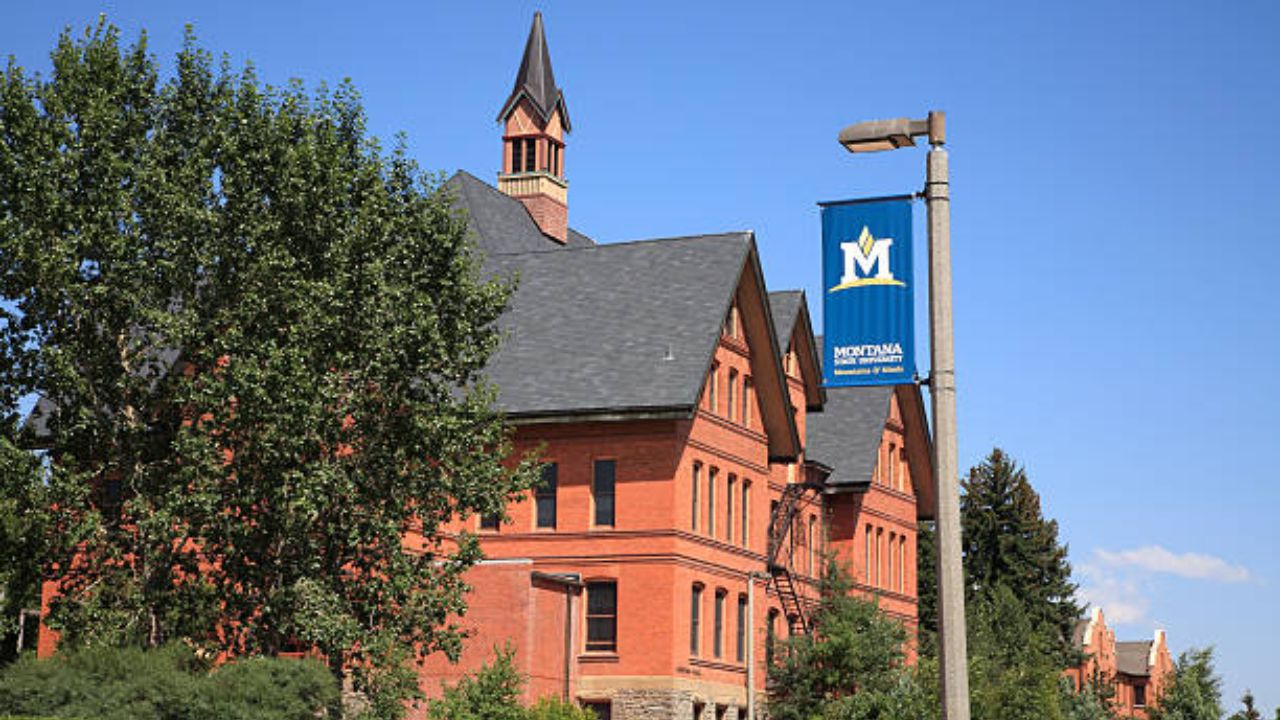Most times, people interchange the term Dental Hygienist with Dental Assistant as they work hand in hand with the Dentist.
Although they both sound alike, their roles are not interchangeable. As someone who will love to pursue a career in either of the fields, it is of the essence you understand the difference between Dental Hygienist and Dental Assistant.
Both dental assistants and dental hygienists work with dentists to help people care for their teeth.
However, the differences between dental assistant and dental hygienist positions center on their qualifications, the tasks I expect them to perform, and their level of interaction with patients.
Read on to learn more about the two positions; their similarities and differences, along with career data, such as employment outlook and salary projections.
Table of contents
- Who is a Dental Hygienist?
- Who is a Dental Assistant?
- What are the Similarities Between a Dental Hygienist and a Dental Assistant?
- What are the Differences Between a Dental Hygiene And Dental Assistant
- #1 Dental Hygienist vs Dental Assistant – Job Description
- #2 Dental Hygienist vs Dental Assistant – Roles/Duties
- #3 Dental Hygienist vs. Dental Assistant – Education
- #4 Dental Hygienist vs Dental Assistant – Duration of Study
- #5 Dental Hygienist vs Dental Assistant – Salary
- #6 Dental Hygienist vs Dental Assistant – Career Outlook
- #7 Dental Hygienist vs Dental Assistant – Work Schedule Flexibility
- #8 Dental Hygienist vs Dental Assistant – Independence
- #9 Dental Hygienist vs Dental Assistant – Highest Concentration of Jobs
- #10 Dental Hygienist vs Dental Assistant – Professional Preparation
- #11 Dental Hygienist vs. Dental Assistant – Certification
- Dental Assistant or Dental Hygienist; Which is Right for You?
- Conclusion
- References
- AUTHOR’S RECOMMENDATION
Who is a Dental Hygienist?
Sometimes called an oral hygienist, a dental hygienist is a licensed dental professional registered with a dental association or regulatory body within their country of practice.
A dental hygienist is an oral health professional who teaches proper oral hygiene, conducts patient assessments, oral inspections, and teeth cleanings.
The primary concern of any dental hygienist is with the preventative oral healthcare of their patients.
Before taking the clinical and written examinations of the board, registered dental hygienists must hold an associate’s degree or a bachelor’s degree in dental hygiene from an accredited college or university.
Once registered, dental hygienists are primary health care professionals who work independently or with dentists and other dental professionals to provide comprehensive oral health care.
They have training and education that focus and specialize in preventing and treating many oral diseases.
Do you know how much schooling you need to be a Dental Hygienist?
Who is a Dental Assistant?
Unlike a dental hygienist, a dental assistant performs more administrative and dental office tasks. Also, referred to as a dental nurse, a dental assistant acts as an immediate aide to the dentist.
Dental assistants support other dental operators in providing efficient treatment to patients.
What Can You Do with a Dental Assisting Certificate?
Aside from working in a general dentistry office, dental assistants have several job options. Below are other jobs you can do with a dental assisting certificate:
- Public health: Dental assistants who want to serve a specific population should consider public health.
- Pediatrics: Good dental habits begin in childhood. If you love children, you will most likely enjoy a career in pediatric dentistry. Notwithstanding, you will need a solid understanding of the transition from baby teeth to adult teeth. Your job will also involve calming nervous children.
- Dental schools: Dental schools often hire dental assistants to help students learn dental procedures. You can help in teaching others what you know here.
- Oral Surgery: Dental assistants are essential for the success of oral surgery. From the handling of the records to the preparation of the operating room and the patient, a dental assistant will remain busy working for an oral surgeon.
- Insurance companies: Dental assistants have a solid knowledge of dental insurance coverage. Consider an insurance claims processing job if you are organized and like administrative tasks.
- Dental product sales: If you are good at building relationships, excel at customer service, then, a career in dental product sales could be a good fit. Your familiarity with various dental products, technology, and equipment can help you make a good pitch and reach an agreement.
What are the Similarities Between a Dental Hygienist and a Dental Assistant?
Even with the differences, dental hygienists and dental assistants have a lot in common as they can be seen working hand in hand with each other.
One of the glaring similarities is that both work with the dentist and are part of the dental team. Other similarities include:
- Assist the dentist
- Patient care duties
- Exam set-up duties
- Technical and medical duties
- Internships
Assist the Dentist
The dental hygienist and assistant are both employed to help the dentist. While the dental assistant helps in the administrative and office management, the dental hygienist majorly assists in medical procedures.
Patient Care Duties
The priority of both the dental hygienist and assistant is to care for the patients. Although the perform this function at different levels, the endpoint is to keep the patients at ease before, during, and after medical treatment.
For instance, the assistant is the patient’s first contact once he/she enters the clinic. He or she must welcome patients and get them ready for treatment.
The hygienist then takes over the cleaning and treatment independently or under the dentist’s watch while the assistant stays around to ensure that patients remain comfortable and relaxed through the procedure.
Exam Set-up Duties
Just like patient care, both ensure the exam room is set up for a patient’s visit. Although the dental assistant will usually take the lead, hygienists are also responsible for the exam preparation and set-up.
In addition, the two can often work together in preparing to receive patients.
Technical and Medical Duties
Dental assistants and hygienists carry out technical and medical tasks in different capacities. Dental assistants perform technical and medical tasks, such as taking patients’ blood pressure, making study cast of their teeth, and also taking x-rays.
On the other hand, dental hygienists will work much more medical duties with patients. Although they do not have the authority to make diagnoses, they often consult dentists and give advice.
In addition, hygienists also perform medical tasks such as charting, cleaning, and polishing of teeth, anesthetic application and assisting dentists in more advanced medical procedures.
Internships
Internships are very common and an important criterion for both the dental assistant and hygienist.
For dental assistants, they do much of their learning as interns. On the other hand, dental hygienes need to do their internship to practice. For instance, some states require 100+ hours of interning before a hygienist can earn his or her license.
Cost should not be why you are giving up on your dental professional. Attend any of these Top 10 Cheapest Dental Schools In The World
What are the Differences Between a Dental Hygiene And Dental Assistant
To an average patient and other persons not familiar with the dental field, the difference may not be clear and glaring.
However, as one who wants to pursue a career in the dental world, you should know these differences as it will help in your decision-making process as you advance in the dental career.
One of the biggest differences between these dental support positions is that while a hygienist often works one-on-one with a patient, and doesn’t receive constant supervision, a dental assistant provides direct help to dentists, conducting office tasks, and small supervised jobs on patients’ teeth.
Other differentiating factors between Dental Hygienists and Assistants include:
- Job description
- Roles/duties
- Education
- Duration of Study
- Salary
- Career Outlook
- Flexibility
- Independence
- The highest concentration of jobs
- Professional preparation
- Certification
#1 Dental Hygienist vs Dental Assistant – Job Description
This is one of the major factors that differentiate dental hygienists from assistants.
A dental hygienist performs more medical and technical duties. Many of these tasks are more advanced and independent, involve direct patient care, and were once performed only by dentists.
Their duties may include polishing patients’ teeth; removing hard and soft deposits from teeth; and using several tools to remove tartar, plaque, and stains.
On the other hand, dental assistants perform more of administrative and management duties.
They are to carry out both preparatory and breakdown duties in the office. Some duties include disinfecting and laying out instruments for a dentist, getting patients’ dental records, handing instruments to dentists during procedures, and instructing patients on caring for their teeth after leaving the dentist’s office.
Also, other administrative office works such as billing patients, keeping a proper record of payments receipt, and ordering dental supplies.
#2 Dental Hygienist vs Dental Assistant – Roles/Duties
Just as the various parts of the body have their unique functions, so do each member of various teams.
Likewise, each member of the dental team has their spelled out roles that they are to carry out.
Below are the roles of a Dental Assistant
- Working closely with patients before, during and after procedures
- Assisting and handing instruments to the dentist during a variety of treatment procedures
- Taking and developing x-rays
- Preparing and disinfecting instruments and equipment
- Obtaining patients’ dental records
- Preparing x-ray machines, impression materials, anesthetics, and cement
- Billing patients and handling payments
- Ordering dental supplies
- Taking impressions of patients’ teeth for study casts (models of teeth)
- Teaching patients appropriate oral hygiene strategies
- Performing office management
Below are the roles of a Dental Hygienist
- Collecting information about the patient’s oral and medical health history
- Removing calculus, stains, and plaque (hard and soft deposits) from all surfaces of the teeth
- Making molds of patients’ teeth used for evaluating treatment
- Polishing patients’ teeth
- Using several tools to remove tartar, plaque, and stains
- Developing x-ray film
- Charting patients’ dental conditions for the dentist
- Applying fluorides and decay preventatives
- Administering local anesthetics
- Removing sutures and dressings
#3 Dental Hygienist vs. Dental Assistant – Education
Often, dental hygienists must have at least an associate or bachelor’s degree in Dental Hygiene from an accredited university or college.
In addition, a state license in the field. In summary, they must pass an accredited training program and clinical and written examinations.
On the other hand, dental assistants may or may not need formal higher education, depending on the state where they work.
Some country’s and states’ regulations require that aspiring dental assistants must complete a one-year certificate or diploma program.
From BLS’s report, the entry-level for a dental assistant is a postsecondary non-degree award while a dental hygienist is an associate degree.
#4 Dental Hygienist vs Dental Assistant – Duration of Study
Generally, earning a dental assistant diploma requires less time and money than earning a bachelor’s or master’s degree to become a dental hygienist.
Typically, a dental assistant’s certification and associate degree programs take one to two years to complete. However, in some institutions, it takes less than a year. According to Delta Technical College, it takes 9 months to get a dental assistant diploma certification.
On the other hand, it takes up to 4 years to complete a Bachelor’s degree in Dental hygiene and extra 2 years to obtain a master’s degree.
However, both programs culminate in a clinical experience.
#5 Dental Hygienist vs Dental Assistant – Salary
According to the 2019 US Bureau of Labor Statistics, the median wage of a Dental Hygienist is $74,820 per year and $35.97 per hour. In addition, the lowest 10 percent earned less than $51,930, and the highest 10 percent earned more than $101,820.
When spread across industries, below is the dental hygienist’s salary report from the statistics:
- Offices of dentists – $75,090
- Offices of physicians – 71,630
- Government – 60,630
Also, from the report, the median wage of a dental assistant is $38,660 per year and $18.59 per hour. Furthermore, the lowest 10 percent received less than $26,940, and the highest 10 percent received more than $54,800.
Meanwhile, when spread across industries, below is the dental assistant’s salary report from the statistics:
- Government – $42,390
- Offices of dentists – 38,670
- Offices of physicians – 35,760
#6 Dental Hygienist vs Dental Assistant – Career Outlook
The 2019 BLS job outlook for dental hygienists shows that employment is projected to grow 11 percent from 2018 to 2028, much faster than the average for all occupations.
Furthermore, the demand for dental services will increase as the population ages and as research continues to link oral health to overall health.
On the other hand, the job outlook report for dental assistants shows that employment is projected to also grow 11 percent from 2018 to 2028, much faster than the average for all occupations.
In addition, the aging population and ongoing research linking oral and general health will continue to increase the demand for preventive dental services.
#7 Dental Hygienist vs Dental Assistant – Work Schedule Flexibility
The work of dental assistants is less flexible as most of them work full-time. Also, some may work evenings or weekends.
Meanwhile, the work of dental hygienists is more flexible as they mostly work part-time. Typically, dentists may hire hygienists to work only a few days a week, so some hygienists work for more than one dentist.
In addition, due to the flexibility of their work, they can easily schedule their activities,
#8 Dental Hygienist vs Dental Assistant – Independence
Most of the activities of the dental assistant are done under the supervision of a higher member of the dental team. In a case where the activity is not supervised, the work done is examined later on.
Meanwhile, licensed dental hygienists can work independently in the absence of a dentist.
#9 Dental Hygienist vs Dental Assistant – Highest Concentration of Jobs
From the BLS Occupational Employment Statistics, the following states have the highest job concentration for dental hygienists in the USA:
- Rhode Island
- Idaho
- Connecticut
- Vermont
- Michigan
From the BLS Occupational Employment Statistics, the following states have the highest job concentration for dental assistants in the USA:
- California
- Texas
- Florida
- New York
- Illinois
#10 Dental Hygienist vs Dental Assistant – Professional Preparation
According to Dentalcareersedu.org, there are currently over 330 accredited dental hygiene programs and 270 accredited dental assisting programs in the U.S recognized by the American Dental Association’s Commission on Dental Accreditation (CODA).
Dental hygienists and dental assistants complete their education through community/junior colleges, technical colleges, and dental schools. However, there are instances where some dental hygienist programs can be found through four-year colleges and universities.
However, the difference between an educational program for a dental hygienist and a dental assistant is that a dental hygienist program offers an associate’s degree, while for a dental assistant, the result is generally a certificate.
Dental assistant programs are typically focused solely on the aspects of the profession, both clinical and administrative, while dental hygienist associate degree programs also include:
- Liberal arts coursework (English, psychology, sociology, etc.)
- Basic science coursework (anatomy, physiology, chemistry, pathology, etc.)
- Clinical science coursework (dental hygiene, radiology, etc.)
Upon completion of a dental hygienist associate degree, students must take a licensure examination (state or regional) to become licensed and begin working in a dental office.
The National Board Dental Hygiene Examination and NBDHE certification are accepted in all states to allow dental hygienists to fulfill all or part of their written examination requirements for licensure.
For dental assistants, the process is generally quite different from one state to the next. Some states have no educational or certification requirements, while others require dental assistant graduates to take and pass state examinations or examinations through the Dental Assisting National Board (DANB).
The most common DANB certification for dental assistants is the Certified Dental Assistant (CDA).
In addition, in the USA, dental assistants have not licensed healthcare professionals, although they may be registered in some states.
#11 Dental Hygienist vs. Dental Assistant – Certification
Upon completion of a dental hygienist associate degree, students must take a licensure examination (state or regional) to become licensed and begin working in a dental office.
The National Board Dental Hygiene Examination and NBDHE certification are accepted in all states to allow dental hygienists to fulfill all or part of their written examination requirements for licensure.
For dental assistants, the process is generally quite different from one state to the next. Some states have no educational or certification requirements, while others require dental assistant graduates to take and pass state examinations or examinations through the Dental Assisting National Board (DANB).
The most common DANB certification for dental assistants is the Certified Dental Assistant (CDA).
In addition, in the USA, dental assistants are not part of licensed healthcare professionals, although they may be registered in some states.
Dental Assistant or Dental Hygienist; Which is Right for You?
Choosing your professional or career path is an important decision.
In this case, if you like the idea of working closely with dentists and patients and also, helping with essential procedures that help people, becoming a dental assistant might be a great option for you.
Meanwhile, suppose you like working independently and also have the time and resources to complete a two to a four-year university program. In that case, dental hygiene can be an exciting career choice.
Conclusion
According to Careerswiki, 9 in 10 working-age Americans either currently have or have had at least one cavity in their lives.
With this increasing rate of dental issues, the place of both dental hygienists and dental assistants, as well as other members of the dental team, cannot be overemphasized.
Therefore, understanding the roles of dental assistants and hygienists will be in order. Also, as one who wants to pursue a career in the dental field, I hope this helps you in making your decisions.
GoodLuck and Success!!!
References
- Dental hygienist – Wikipedia
- Dental Assistant – Wikipedia
- WeeklyLiving – Similarities and Differences Between a Dental Assistant and Hygienist
- Diffen – Dental Assistant vs. Dental Hygienist
- Dental Assistants vs. Dental Hygienists: What’s the Difference?
- What’s the Difference Between a Dental Assistant & a Dental Hygienist?
- Becoming a Dental Hygienist or Dental Assistant
- BLS – Occupational Outlook of Dental Assistants
- BLS – Occupational Outlook of Dental Hygienists
DISCLOSURE: This post may contain affiliate links, meaning when you click the links and make a purchase, we receive a commission.






Comments are closed.